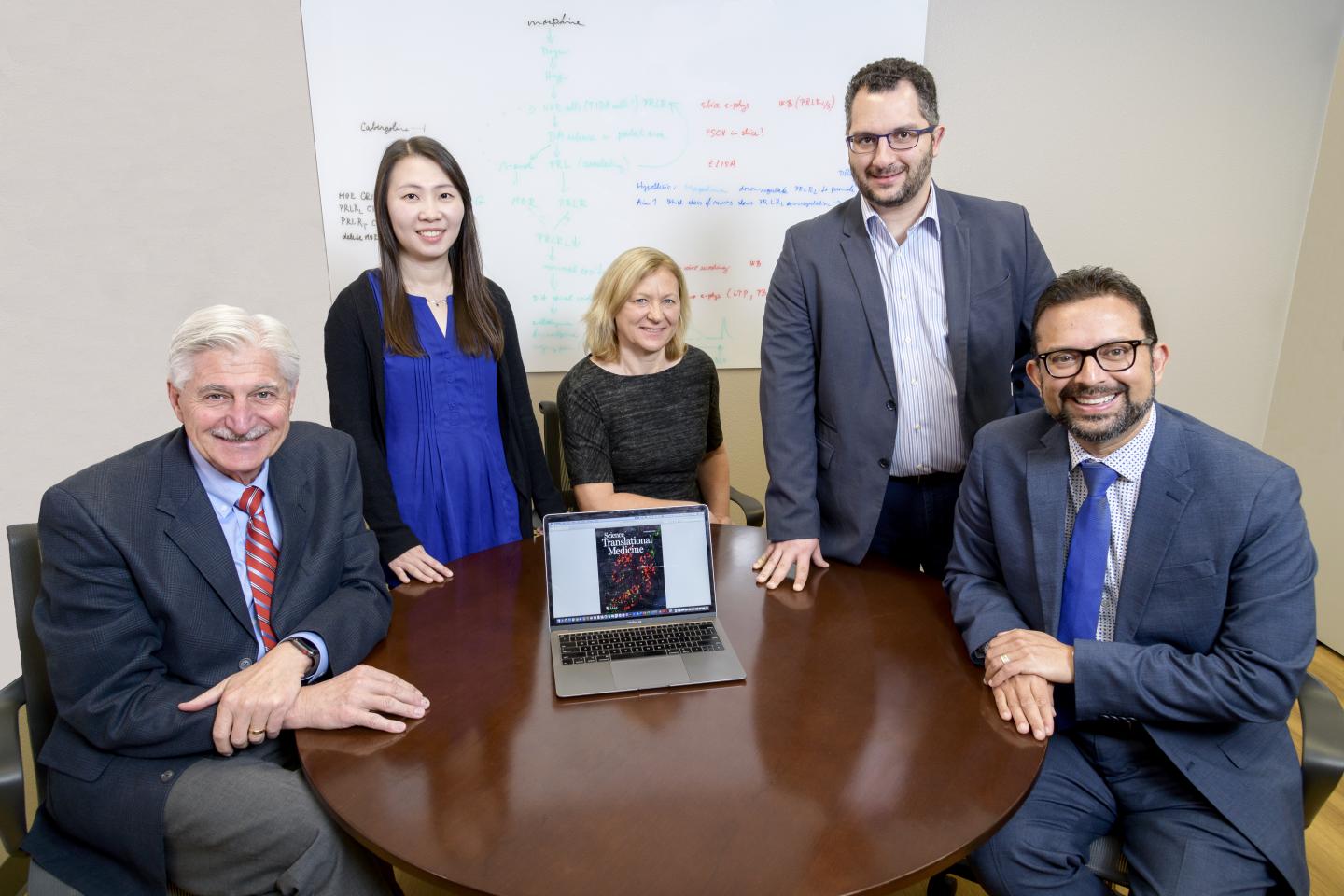
Credit: [Photo: The University of Arizona Health Sciences, Noelle Haro-Gomez]
TUCSON, Ariz. – Imagine taking a pill to control your pain and, instead, the medication actually increases the pain you feel. That may be the situation for patients who take opioids, but even more so for women, according to groundbreaking research by investigators at the University of Arizona College of Medicine – Tucson in the Department of Pharmacology.
The researchers identified a mechanism that explains why women may be more vulnerable than men to develop pain in general, as well as to develop pain from opioids specifically.
The cause is a neurohormone, prolactin, known largely for promoting lactation in expectant mothers in their final months of pregnancy and after childbirth.
Frank Porreca, PhD, associate department head, a professor of Pharmacology, anesthesiology, cancer biology and neuroscience at the college, and senior author on the study, notes it always has been understood that women experience some types of pain that occur without injury (known as “functional pain syndromes”) more than men. The reasons for this never were clearly understood. A possible explanation the researchers explored was the differences in the cells and nerves that send pain signals to the brain in women and men.
The findings suggest new pain-management therapies targeting the prolactin system would greatly benefit women suffering from functional pain syndromes.
“Of all these female-prevalent pain disorders, migraines are among the most common, with about 35 million migraine patients in the United States, and three out of four of those are women. In addition, in fibromyalgia patients, as many as nine out of 10 are women; for irritable bowel syndrome, three out of four are women. When you add up all those women with pain – if you can normalize that – this would provide a huge and important impact on medical care,” Dr. Porreca says.
He points out many of these pain spells are intermittent and associated with triggering events. For instance, he and his colleagues found stress releases prolactin and unexpectedly promotes pain selectively in females.
“These triggering events can be wide-ranging. They can include things like alcohol, fatigue and sleep disruption. But stress is the most common trigger self-identified by patients. That’s where we started our studies – how does stress contribute to female-specific pain or female-selective pain?”
Primary authors on the paper include: Yanxia Chen, a graduate student in Dr. Porreca’s lab; Aubin Moutal, PhD, a research assistant professor in the Department of Pharmacology, working in the lab of Rajesh Khanna, PhD, a UArizona professor of anesthesiology, pharmacology and neuroscience, who also is a co-author on the paper; and Edita Navratilova, PhD, an assistant professor of pharmacology.
Dr. Navratilova says dopamine D-2 receptor agonist drugs that limit prolactin release, such as cabergoline, commonly are used for other diseases, and are not addictive. These drugs, possibly in conjunction with other classes of medications, may help treat those pain conditions in women more effectively without the addictive properties of opioids.
“If we could just reduce the proportion of women who have migraines to the same amount as in men, that would be quite revolutionary,” Dr. Navratilova says.
In addition, since publication of their findings, Dr. Porreca has been contacted by companies interested in investigating whether an antibody previously associated with breast cancer treatment might be able to be engineered as a therapy to guard against pain in women.
###
NOTE: Photos, cover and other images available upon request.
About the University of Arizona College of Medicine -Tucson
The University of Arizona College of Medicine – Tucson is shaping the future of medicine through state-of-the-art medical education programs, groundbreaking research and advancements in patient care in Arizona and beyond. Founded in 1967, the college boasts more than 50 years of innovation, ranking among the top medical schools in the nation for research and primary care. Through the university’s partnership with Banner Health, one of the largest nonprofit health care systems in the country, the college is leading the way in academic medicine. For more information, visit medicine.arizona.edu (Follow us: Facebook | Twitter | Instagram | LinkedIn).
About the University of Arizona Health Sciences
The University of Arizona Health Sciences is the statewide leader in biomedical research and health professions training. UArizona Health Sciences includes the Colleges of Medicine (Tucson and Phoenix), Nursing, Pharmacy, and the Mel and Enid Zuckerman College of Public Health, with main campus locations in Tucson and the Phoenix Biomedical Campus in downtown Phoenix. From these vantage points, Health Sciences reaches across the state of Arizona, the greater Southwest and around the world to provide next-generation education, research and outreach. A major economic engine, Health Sciences employs nearly 5,000 people, has approximately 4,000 students and 900 faculty members, and garners $200 million in research grants and contracts annually. For more information: uahs.arizona.edu (Follow us: Facebook | Twitter | YouTube | LinkedIn | Instagram).
Media Contact
David Mogollon
[email protected]
520-626-1137
Original Source
http://opa.
Related Journal Article
http://dx.





